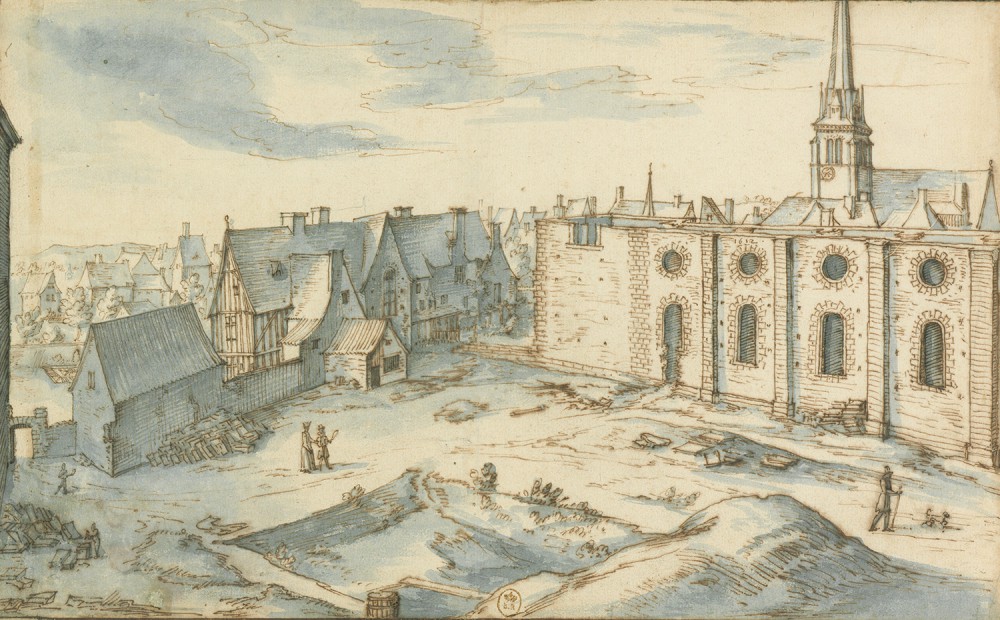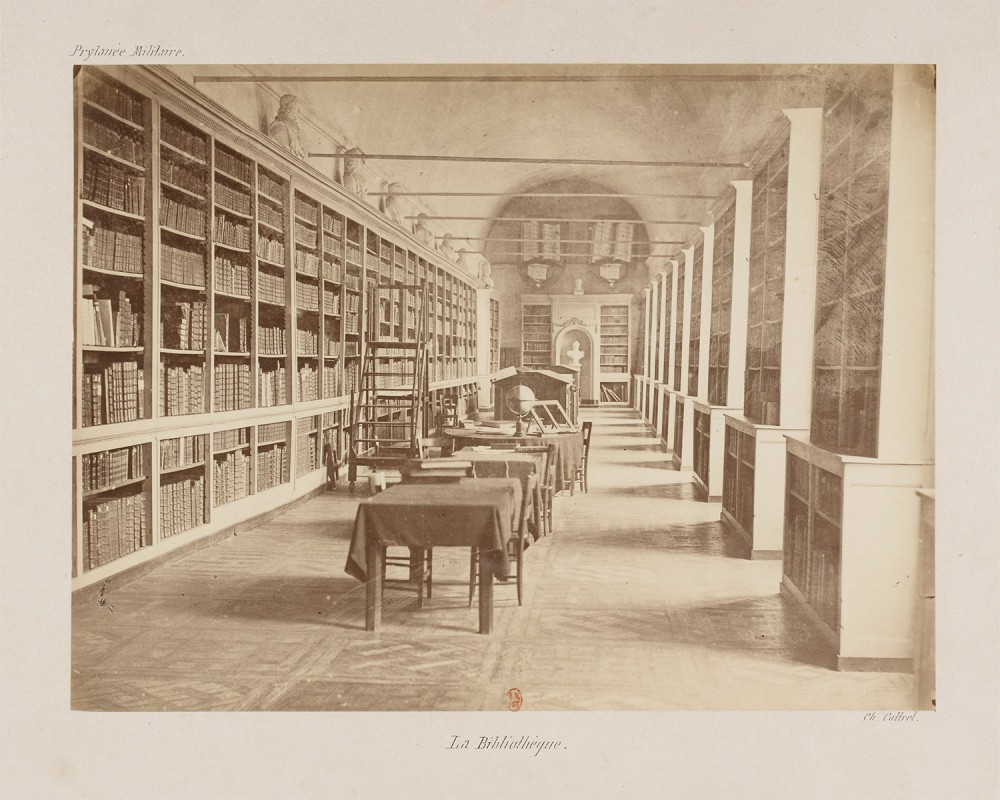The historical record
of the collections
When giving his hereditary castle of La Flèche to the jésuit fathers in ordrer to found a College, Henry IV gave an amount of 10 000 écus, including 1 000 écus to buy books.

To the annual allowance of 300 écus were added some important gifs from non religious and religious private persons wishing to show how they were kind to the school. That is why in 1776, the jesuits owned 4 869 books at least.
In the showcases of the library we can see the books which are thought rare and valuable during the last centuries. Several ways have helped to make the number of the books more important since Henry IV created the library.
To the first and perpetual allowance, under the old regime were added the donations of the Royal family and those of the noble families or the members of the Clergy who were anxious how they were benevolent to the College. In the photo galleries you will find a lot of books the bindings of wich show the coat of ther arms (Marie de Médicis, le Grand Condé, Louis XVI).
We can read ammy the persons who gave donations the names of Marquis Nicolas de Nicolaï... or the canon Eveillon from Angers.
The collection of the Byzantine authors come from the St Denis Abbey.
This tradition way of being patrons existed even after the Revolution : the collections continued to get more important thanks to the donations of the different offices : the Ministry of Defence, Department of Education and science, Home office or private donations such as the Description of Egypt offered by Louis-Philippe. Legacies, revolutionary inveiglings, the migration of the Prytanée from Paris have enriched the initial donations who can seem herogeneous around a fléchois core coming from the library of the jesuits.

A lot of these books have been printed in La Flèche, the tadition of printing goes back to the beginning ot the school and still exists thanks to the Brodart et Taupin society, the specialist of the paperback; lucky enough not only to escape the Revolutionary seizures but alson to get some funds from the abbeys of Versailles, of Trianon and the Paris University. A lot of books can be the witnesses of this difficult history, and we can see in the coats of arms or in the ex-libris.
In 1812, when the books were removed to the old painting gallery, the library now, there were 12 000 books, but 3 000 in 1776 only when the doctrinary Fathers. Nowadays in 2005, the stock of books which have been listed before 1930 consists of 22 000 books.
In the same way, the present stock, the books dated after 1930 which are used by the pupils consists of 12 000 books.
The only catalogue we get in the library was written by M. Sourdon, the archivist. This methodical catalogue, according to Brunet’s classification was only ended in 1839 : it consists of 11 notebooks recording 10 838 books.
Later on, an alphabetical card index doubled the catalogue which got more an more important when we added some sheets. This catalogue is being computered and so a lot of readers will have the opportunity to access the important and precious stock who was only reserved to the happy few who already were aware of the library.
Sylvie Tisserand, curator of the library
